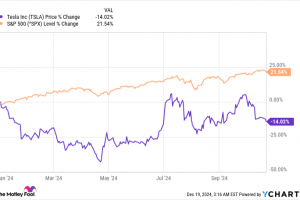
The average bank has a dividend yield of around 2.5%, using the SPDR S&P Bank ETF (NYSEMKT: KBE) as an industry proxy. What if you could own a bank with a yield of 6.1%? What if it was conservatively run, had a strong core business, and was a reliable dividend payer? You would probably jump at the chance to own a high-yield bank like that. No problem — you can buy Bank of Nova Scotia (NYSE: BNS). Here’s why now is a great time to take the leap.
Why is Bank of Nova Scotia’s yield so high?
Bank of Nova Scotia, more commonly known as Scotiabank, has lagged relative to other banks. A big part of the reason for this is that it went in a different strategic direction from its Canadian bank peers. Most of the major Canadian banks chose to expand southward into the U.S. market. Scotiabank skipped over the U.S. and started to build a business in Central and South America.
Image source: Getty Images.
The logic is solid, given that the U.S. is a highly competitive market that is also fully developed. The markets where Scotiabank went were developing and less competitive, suggesting the potential for more long-term growth. While that might have been true, and perhaps still is true, these less developed markets weren’t as profitable as hoped. Scotiabank has lagged its peers on key metrics like earnings growth, return on equity, and return on risk-adjusted assets.
Thus, despite being one of the largest banks in Canada (with an entrenched industry position thanks to strict Canadian banking regulations), Scotiabank is offering a dividend yield of 6.1%, more than twice the yield of the average bank. The bank has paid a dividend every year since 1833, has a generally conservative ethos (another function of being a Canadian bank), and has an investment grade rated balance sheet. Indeed, the risk here seems rather modest for the high-yield reward.
What is Scotiabank doing about its laggard performance?
Of course, the problem for investors is that Scotiabank hasn’t been performing particularly well relative to peers. But management isn’t ignoring the problem. In fact, it has taken the…
..






